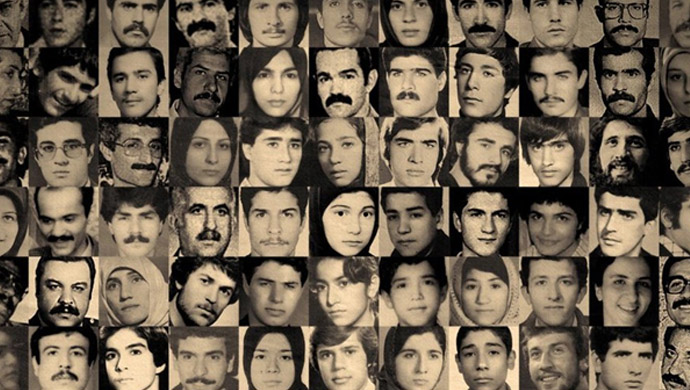The mullahs’ regime ruling Iran has for nearly four decades tried to either completely deny the 1988 massacre of over 30,000 political prisoners, justify it as a judicial ruling, or minimize the scope of this crime against humanity through its network of apologists and lobbyists.
On Tuesday, March 8, however, the its efforts suffered a major blow during the ongoing court hearings of Hamid Noury, a former regime functionary involved in the 1988 massacre who is on trial in Stockholm. Mr. Kenneth Lewis, the lawyer representing the People’s Mojahedin Organization of Iran (PMOI/MEK), presented damning documents to the court, including the hand-written fatwa issued by Ruhollah Khomeini, the first Iranian regime Supreme Leader who ordered the annihilation of all PMOI/MEK members and supporters.
The other documents presented to the court were a letter written by Abdolkarim Mousavi Ardabili, Khomeini’s chief justice in 1988, the criminal justifications expressed by Ali Khamenei, then regime president and now Supreme Leader; remarks from Mohammad Yazdi, a former judiciary chief of Khamenei’s regime; remarks by former intelligence minister Ali Fallahian,and the current regime President Ebrahim Raisi, who himself played a direct role in sending prisoners to the gallows during the 1988 massacre.
Through these documents Mr. Lewis came to this conclusion that based on Khomeini’s fatwa the executions of the 1988 massacre—targeting mostly PMOI/MEK members and supporters—were not only carried in Tehran’s Evin Prison and Gohardasht Prison of Karaj, west of Tehran, but in all prisons across Iran.
The most important document presented in this court session was a telegram dispatched by Iranian Resistance leader Massoud Rajavi to the late Javier Pérez de Cuéllar, then Secretary-General of the United Nations, on August 25, 1988 when the executions were ongoing in Iran. Through his telegram message Mr. Rajavi for the first time spoke of the massacre of PMOI/MEK prisoners under orders from Khomeini himself, including the transfer of 860 corpses from Evin Prison to Tehran’s famous Behesht-e Zahra Cemetery during the two weeks prior to the telegram.
So powerful were the documents that Noury, who had been continuing the deny the existence of the fatwa was ultimately compelled to acknowledge that such a ruling had indeed been issued.
Mr. Rajavi also referred to the arrest of 10,000 people across Iran
in reference to PMOI/MEK supporters being arrested as the massacre was launched. This made it palpably clear that Khomeini and the mullahs’ regime were not satisfied with the mere execution of imprisoned PMOI/MEK members and supporters. In fact, the regime was taking measures to completely eradicate all PMOI/MEK supporters, including former prisoners already released.
In his telegram the Iranian Resistance leader called on the then UN Secretary-General to immediately dispatch a delegation to visit Khomeini’s prisons. Another similar telegram and letter were again sent to the UN Secretary-General and various international human rights organizations.
However, due to the shameless appeasement policy pursued by many countries throughout the world, these calls for justice fell on deaf ears.
March 8 – Stockholm
Freedom-loving Iranians & supporters of the Iranian opposition MEK, rallying outside the court session of Iranian regime operative Hamid Noury for justice on #1988Massacre.#ProsecuteRaisiNOWPart 1pic.twitter.com/2fptI8lfj9
— People's Mojahedin Organization of Iran (PMOI/MEK) (@Mojahedineng) March 8, 2022
Nevertheless, The PMOI/MEK and Iranian Resistance, continued to seek justice for the 1988 massacre victims. While the Iranian regime was and has been using it petrodollars to encourage foreign governments to remain silent on its crimes, and especially the 1988 massacre. To overcome the Western powers ambivalence and inaction, Mrs. Maryam Rajavi, President-elect of the Iranian opposition coalition National Council of Resistance of Iran (NCRI), has been waging a campaign for justice movement since 2016.
This includes defeating and neutralizing various plots pursued by the mullahs’ regime. One of the most significant of these plots has become clearer during the court hearings of Hamid Noury. The Iranian regime has been focusing on using these procedures to completely deny the 1988 massacre and downgrade the importance of the ongoing movement seeking justice for the 1988 massacre victims.
Tehran’s initiative, however, was neutralized through the presentation of the abovementioned documents in Tuesday’s hearings, parallel to testimonies delivered by dozens of former political prisoners.
As we speak the 1988 massacre has been registered as an act of genocide and crime against humanity in global public opinion. The next step involves place those who ordered and carried out the 1988 massacre, and the killing of over 1,500 protesters during Iran’s nationwide November 2019 protests, before justice.





